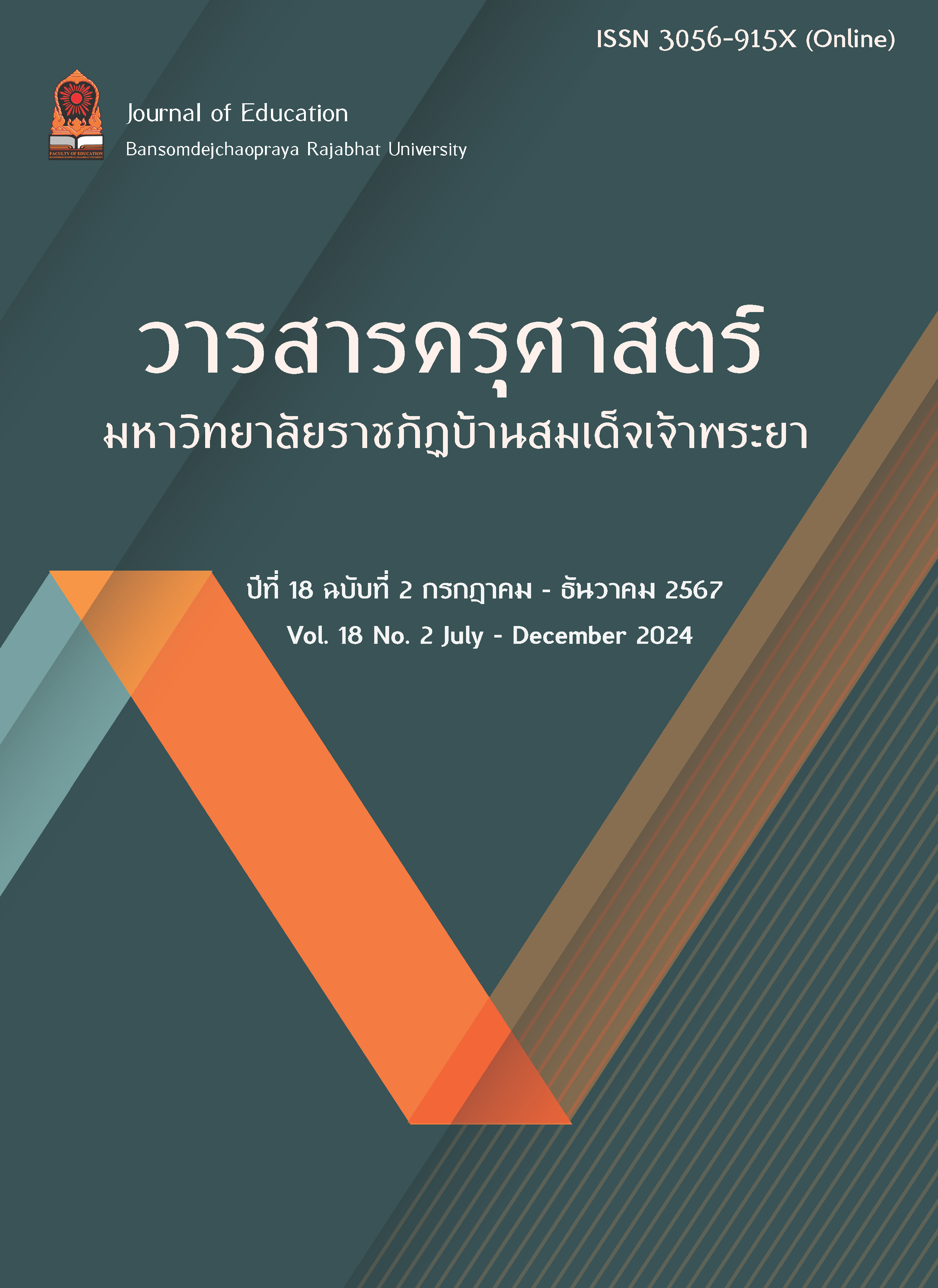Development of an experimental apparatus on pulleys for learning management in promoting learning achievements in Physics
Keywords:
Experimental apparatus, Pulley, Physics, Learning ManagementAbstract
The purpose of this research was to 1) develop and determine the effectiveness of the experimental apparatus on pulleys; 2) compare learning achievements before and after the use of the experimental apparatus on pulleys; and 3)study learner satisfaction in inquiry-based learning with the experimental apparatus on pulleys. The samples consisted of 18 seventh grade students of some school, Bangkok. The sample group was obtained by purposive sampling. The research instruments were 1) lesson plans 2) the experimental apparatus on pulleys 3) assessment from of qualified experiment apparatus 4) achievement test; and (5) a student satisfaction questionnaire. The findings were as follows: 1) The experimental apparatus that was developed was effectively according to principles and theories and can be used in learning management, where by the experimental apparatus can be used to change all seven experiment models with deviation scores not exceeding 20%, for which experts evaluated the quality of the experimental apparatus as excellence ( X= 3.63/4.00) 2) the students’ learning achievement after using the experimental apparatus, post-test is significantly higher than the pre-test at .05 level and 3) students were satisfied with their learning at a very high level (X= 4.21/5.00).
Downloads
References
Akkaratheeranun, T. (2012). Development of a High Efficiency Standing Wave on a String Apparatus for Performing and Experiment, Teaching and Learning Activitie in Physics on Wave. Department of Curriculum and Instruction. Faculty of Education, Srinakharinwirot University. (in Thai)
Boonyang, S., Srisanyong, S., and Singlop, S. (2016). A Development of Learning Active Package on Ecosystem Using Cooperative Leaning With STAD Technique for Grade 9 Student. Journal of Education Naresuan University, 14 (4), 223-237. (in Thai)
Collins, A., 2002, How Students Learn and How Teachers Teach, In R. W. Bybee (ed.),
Science educators' essay collection: Learning science and the science of learning, p 3-11.
Moszkowski, A. (1970). Conversations with Einstein. New York, Horizon Press.
Morkkrathok, P. (2002). Development of an Experimental Set on Linear Motion for the Upper Secondary Level. Science Education. Graduate School, Srinakharinwirot University. (in Thai)
Nuntanut wattasupinyo. (2020). The Development of a Current and Magnetic Field
Experimental Apparatus to Exchance Undergraduate Student Achievement for Physics Teaching. Journal of Education Naresuan University, 22(1). 109-122.
Saksuparb, K. (2013). Development of an Instruction Model (PECA) with Emphasis on Physics Problems Solving Ability of Upper Secondary Student. Science Education. Graduate School, Srinakharinwirot University. (in Thai)
Downloads
Published
How to Cite
Issue
Section
License
Copyright (c) 2024 Faculty of Educaion Bansomdejchaopraya Rajabhat University

This work is licensed under a Creative Commons Attribution-NonCommercial-NoDerivatives 4.0 International License.
บทความที่ได้รับการตีพิมพ์เป็นลิขสิทธิ์ของคณะครุศาสตร์ มหาวิทยาลัยราชภัฏบ้านสมเด็จเจ้าพระยา
ข้อความที่ปรากฏในบทความแต่ละเรื่องในวารสารวิชาการเล่มนี้เป็นความคิดเห็นส่วนตัวของผู้เขียนแต่ละท่านไม่เกี่ยวข้องกับมหาวิทยาลัยราชภัฏบ้านสมเด็จเจ้าพระยา และคณาจารย์ท่านอื่นๆในมหาวิทยาลัยฯ แต่อย่างใด ความรับผิดชอบองค์ประกอบทั้งหมดของบทความแต่ละเรื่องเป็นของผู้เขียนแต่ละท่าน หากมีความผิดพลาดใดๆ ผู้เขียนแต่ละท่านจะรับผิดชอบบทความของตนเอง



